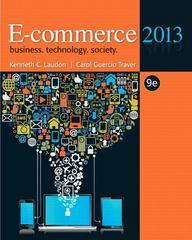Question
a) Assume there are two countries, North and South that start at the intersection of the internal and external balance lines of the Swan Diagram.
a) Assume there are two countries, North and South that start at the intersection of the internal and external balance lines of the Swan Diagram. Show this point on the Swan Diagram as point A.
b) North and South agree to join a currency union which means the exchange rate between these countries is expected to be fixed forever. Inflation is higher in the South than in the North. What happens to the real exchange rate in the North and the South?
c) What happens to the trade balance in this case?
d) Show this change on the Swan Diagram and label the new situation as point B. (Note: Assume that both countries remain in internal balance)
e) Given what you know about the balance of payments equation and that no reserves cross borders in a currency union, what must be true about the relationship between the current account and the capital account in North and South?
f) Assume these capital flows fuel excessive public and private debt growth in the South.Now there is worry about the safety of Southern debt which increases interest rates in the South and decreases interest rates in the North (as investors flee to the safety of northern debt).According to the IS-equation, what should happen to output in the North and the South?
g) As the IS-curve is the demand for output, what happens to domestic demand in North and South as a result of these interest rate changes?
h) Show this change on the Swan diagram as point C. (Note: your graph should show both internal and external imbalance now)
i) What region of the Swan Diagram does the South find itself in?
j) How much does the South like this situation?
k) What region of the Swan Diagram does the North find itself in?
l) How much does the North like this situation? What would your answer be if I told you the North has a system of collective bargaining where labor unions are able to trade lower wage increases for higher employment, which would keep inflation under control if an inflationary gap were to arise?
m) Keynes argued that the gold standard was flawed because it did not require adjustment by surplus countries but only by deficit countries. Do you see a similar situation here with the North?
n) Does the North have an incentive to adjust to resolve these imbalances?
o) Assume for a moment that South and North were not in a currency union but instead had kept their old arrangement where the South fixed its exchange rate to the North. What could be changed about the exchange rate to move towards internal balance for both economies?
p) Return to reality now. The exchange rate will not be changed. What has to be true about relative inflation in the North and the South to change the real exchange rate and move toward internal balance?
q) Given your answer to question o, do you think it is likely that the North will be willing to accept high inflation to resolve the situation?
r) Given your answer to question q, it seems likely that deflation will be likely in the South in order to restore internal balance. If prices and wages are very sticky in the South, what will be true about unemployment and the speed of recovery in the South?
s) There is another way out however. The North has strong unions and extensive collective bargaining arrangements so that workers can bargain for higher wages with employers.Assume a constant markup of prices over costs like wages. Explain how northern workers bargaining for higher wages can both increase living standards for northern workers and reduce unemployment for southern workers.
Step by Step Solution
There are 3 Steps involved in it
Step: 1

Get Instant Access to Expert-Tailored Solutions
See step-by-step solutions with expert insights and AI powered tools for academic success
Step: 2

Step: 3

Ace Your Homework with AI
Get the answers you need in no time with our AI-driven, step-by-step assistance
Get Started


